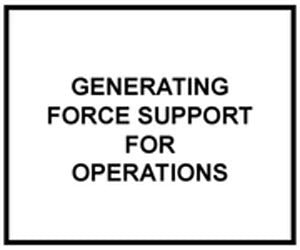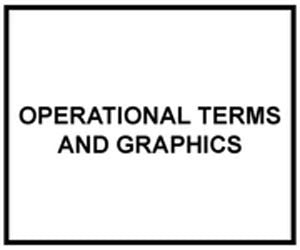
FM 1-01: Generating Force Support for Operations
Official US Army Field Manual in Acrobat PDF file format.
This manual defines the Army’s generating force and establishes as doctrine the employment of its capabilities in support of ongoing joint and multinational operations and deployed forces. It describes how operating forces can access and employ generating force capabilities in support of ongoing operations. It incorporates lessons learned from recent and ongoing operations, including Operations Enduring Freedom and Iraqi Freedom, the War on Terrorism, the response to Hurricane Katrina, and others. This information allows operational Army forces to understand generating force capabilities and employ these capabilities successfully in support of ongoing operations. It enables generating force organizations to ready these capabilities. This manual describes how the joint force can access and employ generating force capabilities in support of operations.
The generating force consists of Army organizations whose primary mission is to generate and sustain the operational Army. The United States Army Training and Doctrine Command (TRADOC), for example, is part of the generating force. Activities the generating force conducts in support of readiness, Army force generation (ARFORGEN), and the routine performance of functions specified and implied in Title 10 and other applicable legislation are addressed in Army regulations and Department of the Army pamphlets and are not addressed here. As a consequence of its performance of functions specified and implied by law, the generating force also possesses operationally useful capabilities for employment by or in direct support of joint force commanders. This manual’s introduction elaborates the manual’s purpose and explains the necessity of employing generating force capabilities in the conduct of operations. It introduces the three principal categories of generating force support to ongoing operations: adapting to the operational environment, enabling strategic reach, and developing multinational partner capability and capacity.
• Chapter 1 defines the generating force and its relationship to the operational Army and the joint force. It describes the three categories of capabilities.
• Chapter 2 describes the operational environment and the role of landpower within it. It briefly describes where the generating force fits within the operational environment.
• Chapter 3 describes the employment of the generating force for ongoing operations. This includes how operating forces access generating force capabilities and the employment of those capabilities in a joint campaign.
• Chapter 4 describes how the generating force enables adaptation to the operational environment. It describes how generating force capabilities contribute to attaining situational understanding and adapting Army operational capabilities to a specific context.
• Chapter 5 describes how the generating force enables strategic reach. It describes the generating force’s role in projecting power and sustaining it once deployed. It describes the generating force’s role in developing and maintaining the network that connects Soldiers, policy makers, and support personnel. It concludes by describing the generating force’s role in supporting reconstruction.
• Chapter 6 discusses how the generating force supports the development of multinational partner capability and capacity through participation in security and reconstruction.
• The appendix lists the principal generating force organizations and their capabilities for
supporting operations.
This manual applies to Army headquarters at the brigade echelon and above. It is of primary interest to the commanders and staffs of theater armies, corps, and divisions and the leaders of Army commands, direct reporting units, and Headquarters, Department of the Army. It applies to all Army leaders, especially planners, trainers, educators, force designers, materiel developers, and doctrine developers.
This manual applies to the Regular Army, Army National Guard of the United States, and the U.S. Army Reserve unless otherwise stated.
File download size: 0.5 MB



